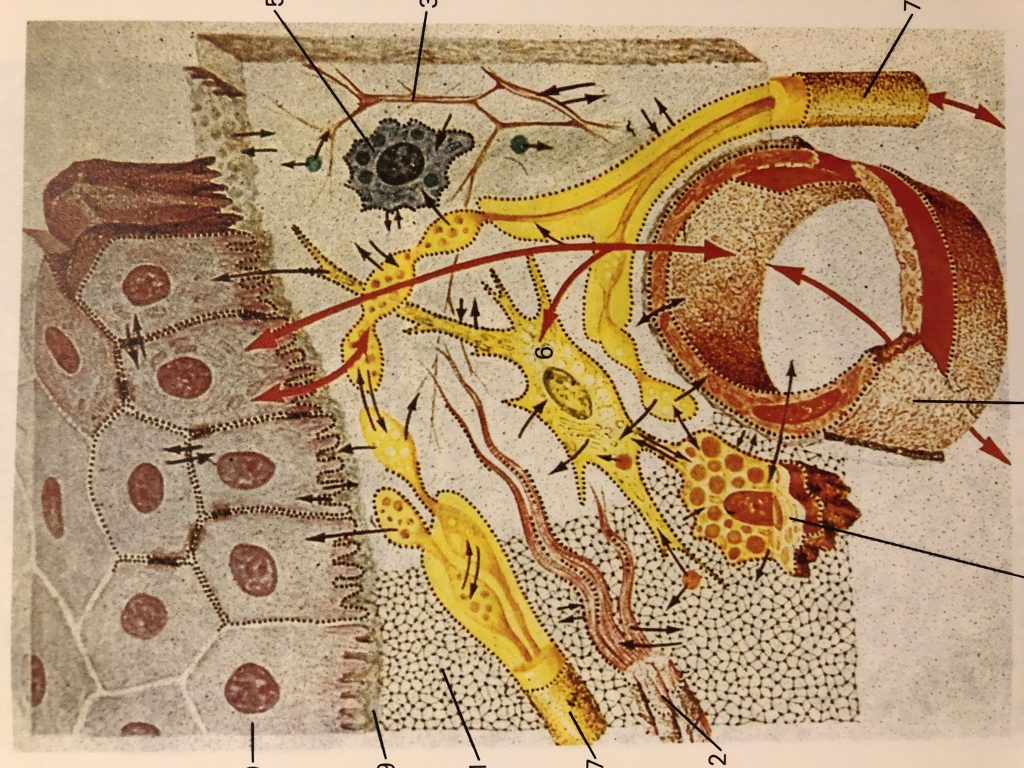Tensegrity and Immunology.Part 1
Mechanical properties of the skin are changed with time. Altered pre-stress changes first defenses of the immune system-physical barriers-Epidermis and dermal layers of the skin. Reduced functional capacity and increased susceptibility of the skin with development of dermatoses such as dry skin, itching, ulcers, dis-pigmentation, wrinkles, fungal infections, as well as benign and malignant tumors are the most common skin conditions in aged population. In turn altered appearance, dry skin, chronic wounds, and other conditions decrease general health and reduce the likelihood for healthy and active aging. Ability of the skin to carry out multiple and wide-ranging roles is very closely related to its structure, which is composed of an outer epidermis overlying an inner dermis, separated by a basement membrane.
Relevant Histology:
Stratum Corneum
Stratum Granulosum
Stratum Spinosum
Stratum Basale


Skin perform barrier function for invaders:
Physical barriers: terminally differentiated epidermal keratinocytes.
Biochemical barriers: acidic, hydrolipidic nature of the skin, as a result of sweat, sebum, lipids, and antimicrobial peptides (AMPs).Any changes in lipid composition and epidermal differentiation lead to a disturbed skin barrier, which plays a role in the pathogenesis of several immune-mediated skin pathologies, such as atopic dermatitis and ichthyosis vulgaris .
The epidermis is a host to keratinocytes, melanocytes and immune cells such as Langerhans cells (LCs) and T lymphocytes, nerve-ending cells (Merkel cells).The dermis is composed of an upper papillary (stratum papillare) and lower reticular (stratum reticulare) dermis containing thin and thick collagen fibers, respectively. The collagen fibers offer a mechanical barrier as well as a structural environment in which to host blood vessels and many immune cells such as dermal dendritic cells (DDCs), ab T cells, gd T cells, natural killer (NK) cells, B cells, mast cells, and macrophages can perform their function.
More recently, it was proposed a sentinel role in health and disease for a spectrum of skin-resident cells ( with keratinocytes involved in sensing pathogens and danger signals, migratory DCs capable of initiating a diverse range of immune responses, and tissue-resident memory T (Trm) cells performing crucial effector functions.
Skin-associated lymphoid tissue (SALT) participates in trafficking of immune cells between the skin, draining lymph nodes (LNs), and the peripheral circulation (Streilein, 1983).

